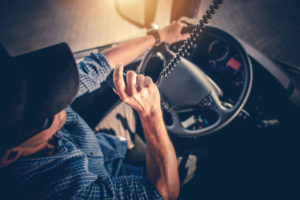By Kim Horner, The University of Texas at Dallas
Those cute food-delivery robots aren’t the only self-driving vehicles on The University of Texas at Dallas campus.
You might also see Voltron, an electric vehicle that looks like a cross between a golf cart and a minibus, cruising around campus this fall.
In the Engineering and Computer Science West building, you might also get a glimpse of Super COMO, a toy-sized truck, navigating the halls and practicing what to do at stop signs.
These autonomous vehicles don’t deliver snacks like the white robots from UT Dallas Dining and Starship Technologies. Voltron and Super COMO are part of research projects in the Erik Jonsson School of Engineering and Computer Science to advance autonomous vehicle technology. Researchers demonstrated Voltron and Super COMO last summer at an AI Self-Driving Small Vehicle Showcase at UT Dallas.
Voltron’s home is the lab of Dr. Justin Ruths, assistant professor of mechanical engineering. The vehicle is part of the hardware testbeds the lab aims to use to study the security of control systems. Ruths and his team of undergraduate researchers are hard at work coordinating the network of sensors and implementing algorithms to enable the vehicle’s growing autonomous capabilities.
A mechanical engineering team in the UTDesign senior capstone program retrofitted the Polaris GEM e6 vehicle with sensors, including 3D lidar, which measures the distance between the vehicle and surrounding objects, and stereoscopic cameras, which capture 3D images. A computer science UTDesign team developed a first version of the software to collect sensing data.
“All of the development of this platform has been done by undergraduates at UT Dallas, and that makes me excited about the kinds of exposure these students are getting and the expertise that we’re building,” Ruths said.
Ruths and his students also work on the theory needed to understand how to detect, quantify and mitigate attacks that could compromise the sensors.
“As you see us driving around, we’re collecting data to analyze so that we can build mathematical models to approximate these dynamics,” Ruths said.
Super COMO is another type of artificial intelligence (AI) vehicle — an autonomous car designed in the Control, Optimization, and Networks Lab run by Dr. Tyler Summers, associate professor of mechanical engineering.
UTDesign teams added sensors — like those on full-sized autonomous cars — and an onboard computer that runs machine-learning, detection, planning and control algorithms to help the vehicles avoid collisions, drive along a line or a wall, and recognize and respond to stop signs.
Sleiman Safaoui BS’19, a doctoral electrical engineering student, was a member of one of the UTDesign teams during his senior year, when he was supported through the Research Experiences for Undergraduates program sponsored by the National Science Foundation. Now, he mentors undergraduates to further develop the technology. Safaoui and fellow researchers are trying to solve problems of how noise and uncertainty — such as inaccurate measurements, misclassifications or unexpected changes in the environment — could compromise the systems that control the vehicles.
“We’re always looking for motivated and self-driven undergraduate and graduate students who are interested in autonomous vehicles and would like to work on Super COMO,” Safaoui said.
Computer engineering junior Will Heitman, who leads the team of student engineers working on Voltron, said he got involved after seeing the vehicle during a campus tour when he was in high school.
“It’s a large, red, strange-looking golf cart, so it was hard to miss,” he said.
The research projects are part of larger efforts to solve questions that need to be addressed before autonomous vehicle technology goes mainstream.
“I’m interested in the potential of self-driving cars to make roads safer, reduce traffic congestion and cut carbon emissions,” Heitman said. “Of course, I also want to help eliminate the chore of driving. I’m from Baton Rouge, Louisiana, and I drive 16 hours round trip to visit my family there. Often, I wish I could just press a button, get the car to drive me home, and I could just take a nap or something. I don’t think I’m the only person on the road who wants to do that.”
Summers’ research is supported by grants from the Air Force Office of Scientific Research, the Army Research Office and the National Science Foundation. Ruths’ project received funding through the UT System Science and Technology Acquisition and Retention (STARs) program.

